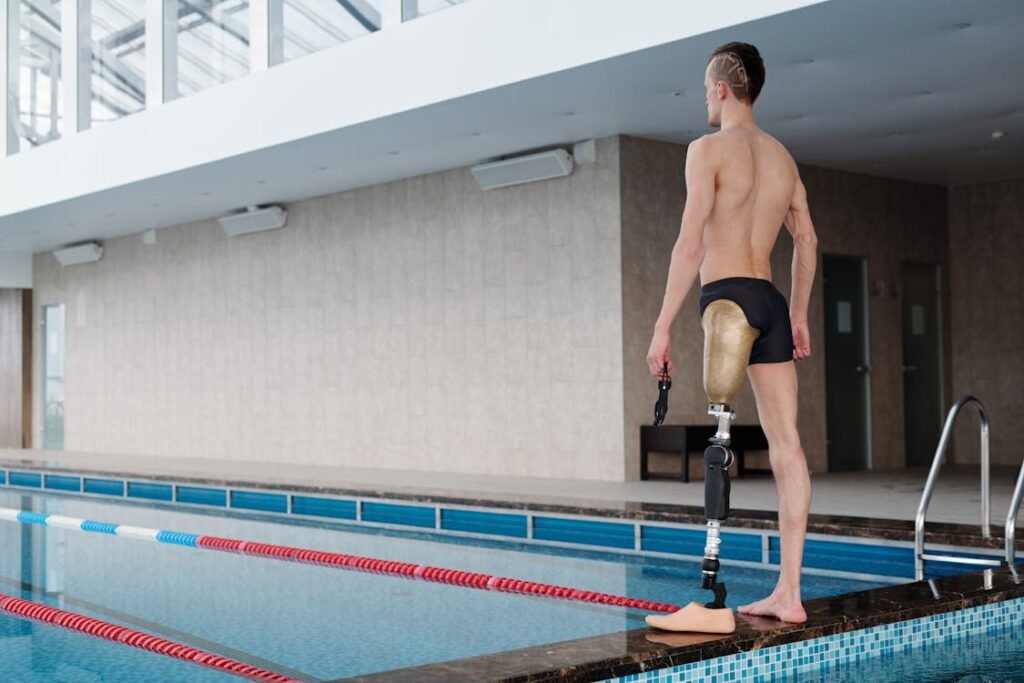When we watch someone walk, we often notice how smooth or natural their steps look. For people using prosthetics, this simple movement can be the hardest thing to achieve. It’s not just about being able to walk. It’s about walking in a way that feels—and looks—natural. That’s where multi-axial joints come in.
Multi-axial joints are small components with a big impact. They help a prosthetic limb move in more than one direction, just like real ankles or knees do. Instead of stiff, robotic movements, these joints allow gentle tilts, twists, and rolls. The result? A smoother step, better balance, and a more confident user.
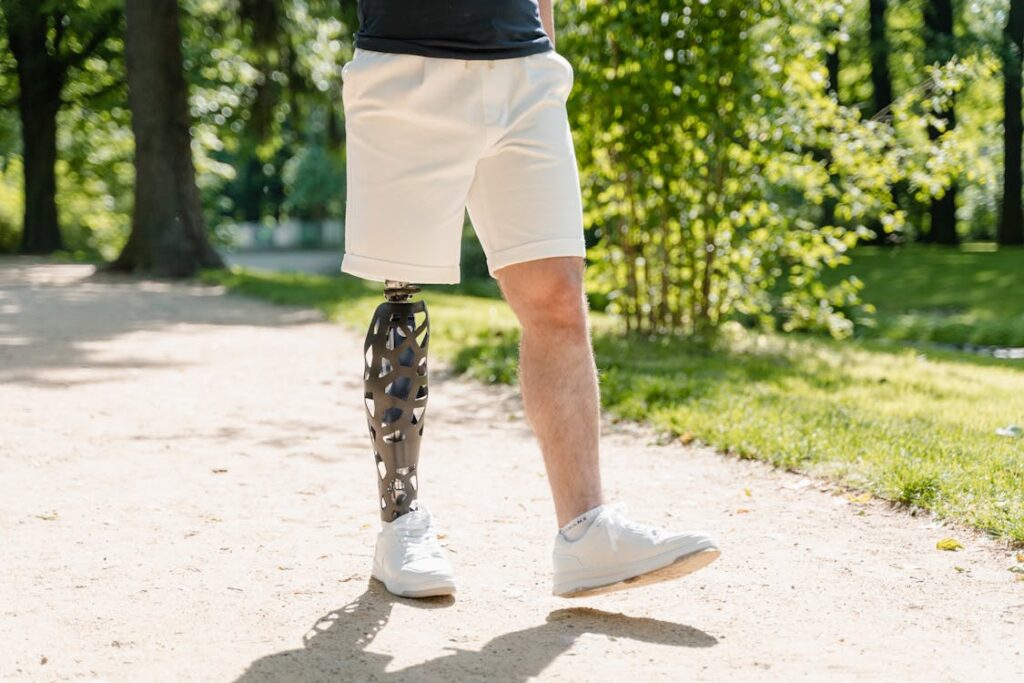
What Makes Movement Feel Natural in a Prosthetic?
The Difference Between Basic and Natural Movement
Moving naturally isn’t just about getting from one place to another. It’s about how that movement looks and feels. Natural movement flows. It bends, shifts, and reacts to the world around us.
Our bodies adjust automatically to little changes—like stepping on a slope, turning a corner, or walking on soft grass.
With a basic prosthetic, movement often feels stiff. It may help someone walk, but the motion can look forced or unnatural.
That’s because the limb is only moving in one main direction—forward and back. This kind of single-axis movement can’t respond to all the small changes in how our body needs to move throughout the day.
Now think of how your ankle moves when you walk on a rocky path. It tilts slightly to the side. It rolls forward. It even shifts a little as you balance.
All of that is natural multi-directional movement. And that’s exactly what multi-axial joints are designed to mimic.
How Multi-Axial Joints Help
A multi-axial joint allows movement in more than one plane. That means the prosthetic foot or knee can not only move forward and backward, but also tilt side to side, twist slightly, and adjust up or down.
This adds layers of flexibility, which makes every step feel more controlled and responsive.
The more a prosthetic can move like the natural joints in our body, the more natural the overall motion becomes. This makes it easier for users to keep their balance and adjust to uneven surfaces.
It also helps reduce the force that travels through the rest of the body, making walking less tiring.
For example, when someone steps onto a small bump or dips into a pothole, a rigid foot might cause them to trip or lose balance.
But a foot with a multi-axial joint adapts. It tilts with the shape of the ground and returns to a stable position quickly. This improves safety and reduces stress on the limb.
The Role of the Ankle in Movement
The human ankle is incredibly complex. It moves in many directions and reacts quickly to changes in the ground or body position.
This small joint plays a big role in walking, running, and standing still. Without it, even simple movements like turning or climbing stairs become harder.
That’s why modern prosthetics try to copy this joint as closely as possible. A multi-axial ankle joint allows the prosthetic foot to shift side-to-side when needed.
It also gives a bit of rotation and up-down motion to match the way a natural ankle responds to real life.
This means the user doesn’t have to overcompensate with their hips or back just to stay balanced. The prosthetic does more of the work, so the user can walk more easily and with better posture.
Smooth Gait and Body Alignment
A smooth gait is not just about appearance—it’s about health. When someone walks with a limp or uneven steps, the body gets out of alignment.
Over time, this causes pain in the hips, knees, and back. It also uses more energy. Every step becomes a little harder than it needs to be.
Multi-axial joints make the walking pattern more even. They help the foot strike the ground at the right angle, roll forward smoothly, and lift off with ease.
This reduces the amount of effort needed to walk, which means the user can move for longer without feeling tired.
It also leads to better posture. When the prosthetic foot or knee can move with the body, rather than against it, everything lines up better. This helps reduce strain and keeps the body healthier in the long run.
Everyday Scenarios Where It Matters
It’s easy to overlook how much movement happens in a single day. Standing on a moving bus, stepping over a crack in the sidewalk, turning around to speak with someone—each of these moments needs the body to react quickly and smoothly. Multi-axial joints make those movements possible.
They add flexibility, safety, and control to everyday tasks. That means fewer stumbles, less effort, and more confidence. For many users, it’s the difference between walking with hesitation and walking with ease.
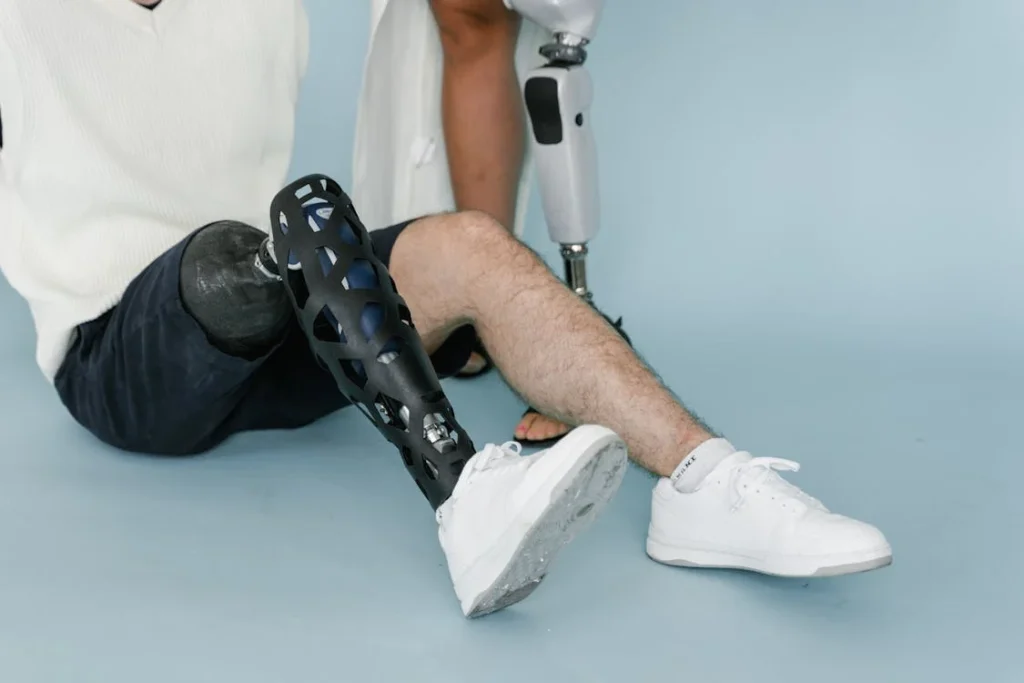
Inside the Design of Multi-Axial Joints
How the Technology Works
At the heart of a multi-axial joint is movement in multiple directions. Unlike a simple hinge that only swings forward and back, these joints are made with parts that can shift side to side and rotate a bit.
Some are built with rubber bumpers or flexible materials that compress and stretch slightly. Others use rotating parts and tension systems to allow more dynamic control.
These joints are often placed at the ankle or knee level, where a lot of movement naturally happens. In the foot, a multi-axial joint lets the heel absorb shock when it strikes the ground.
Then, as the body moves forward, the joint allows the foot to roll naturally. If the surface is uneven, it tilts just enough to stay stable. All of this happens quickly, step after step.
In the knee, a multi-axial design can allow some degree of rotation or side motion, which makes sitting, turning, or walking on slopes easier.
While not all users need this, it can be especially helpful for active people or those navigating challenging environments.
Why Simplicity in Design Still Matters
While multi-axial joints are designed to add movement, they still need to be strong and dependable. The design must balance flexibility with durability.
If the joint is too loose, the user may feel unstable. If it’s too stiff, it won’t offer the natural movement it’s meant to provide.
Engineers often design these joints to be low-maintenance and easy to clean, especially in areas where dust and moisture are common.
Simpler systems with fewer moving parts tend to last longer and are easier to repair locally. This makes a big difference in places where access to prosthetic care is limited or where repairs need to be done quickly.
For many users in India and similar settings, practicality matters just as much as performance. A joint that provides natural movement without needing constant adjustments or expensive replacements is more likely to support long-term use.
The Role of Materials
Materials are key to how well a multi-axial joint works. Some use tough, lightweight metals like titanium or aluminum. Others rely on advanced plastics or carbon fiber composites.
These materials are chosen not just for strength but also for how they respond under pressure.
For instance, rubber elements may be used to provide resistance during side-to-side motion. These parts act like natural ligaments, giving a little when needed but always returning to their original shape.
This helps the prosthetic feel more responsive and less mechanical.
In more advanced models, designers may use shock-absorbing elements within the joint itself. This adds another layer of protection for the user, reducing the stress that travels up through the body with each step.
Custom Fit and User Adaptation
Even the best multi-axial joint won’t work well if it’s not matched to the user’s needs. That’s why proper fitting is essential.
The angle of movement, the amount of resistance, and the way the joint sits within the prosthetic all need to be tailored.
During the fitting process, prosthetists work closely with users to test different joint types and make adjustments. Sometimes, a user might feel unsteady at first.
That’s because the new movement feels unfamiliar. But with training and gradual use, the body adapts. Soon, the extra motion begins to feel natural, and walking becomes easier.
It’s not just about the joint—it’s about how the entire limb system works together. The socket, pylon, foot, and joint must be in harmony.
When that happens, users can walk, turn, climb, and move through life with more comfort and confidence
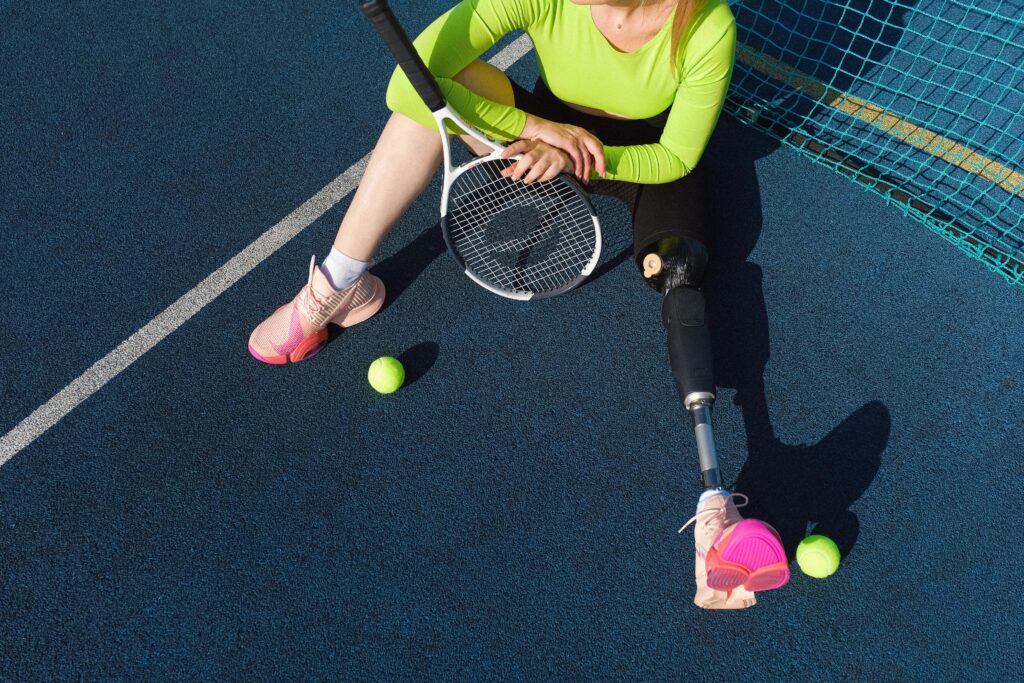
Real-World Benefits of Multi-Axial Prosthetic Joints
Improving Balance and Stability
One of the first things users notice with multi-axial joints is how much easier it is to stay balanced. Our world isn’t flat. Sidewalks crack, floors tilt, and stairs come in all shapes and sizes.
Even something as simple as standing on a moving bus or turning quickly in a crowded space can throw someone off balance if their prosthetic is too stiff.
Multi-axial joints give that subtle flexibility the body needs to adjust on the go. If the ground tilts slightly, the joint allows the prosthetic foot to tilt with it, keeping the rest of the body upright.
This balance support becomes second nature, helping users feel more grounded in every situation. Over time, this improves overall body awareness and stability, especially for new users or those still adjusting after limb loss.
Better balance doesn’t just help prevent falls—it helps people trust their own movement again. That trust is what opens the door to independence.
Making Each Step Feel Smoother
Walking without thinking about it—that’s what most of us take for granted. But for prosthetic users, every step involves awareness and sometimes, effort.
Without a joint that moves naturally, walking can feel like marching or stomping. Each step lands hard, rolls awkwardly, and demands more from the hips and spine.
With multi-axial joints, the foot or knee moves in a way that mimics the body. The heel hits the ground softly, the foot rolls forward smoothly, and the ankle or knee adjusts naturally with the step.
This kind of motion uses less energy and feels easier on the joints and muscles.
The real result? Less fatigue. Users report they can walk farther and longer without getting tired or sore. That means more freedom to run errands, socialize, or even travel—all without worrying about how far they can go before discomfort sets in.
Helping With Slopes, Turns, and Uneven Surfaces
Imagine walking across a gravel path, a sandy road, or a tiled floor that suddenly becomes wet and slippery.
These are everyday challenges that can become real dangers for someone using a rigid prosthetic. That’s where the flexibility of a multi-axial joint shines.
When the foot can tilt and shift slightly with each step, it adjusts to those changes in the ground without throwing off the user’s balance.
It doesn’t need perfect timing or conscious control—it just responds. This helps users stay upright and safe in unpredictable conditions.
Even turning a corner or stepping sideways becomes easier. The joint allows the limb to twist slightly without forcing the user to swing their entire body or plant their foot at an awkward angle.
These small movements make a big difference in daily confidence.
Supporting a More Natural Look and Feel
Prosthetics are not just about function—they’re about identity. When someone feels that their movement looks natural, it boosts confidence.
People walk with their heads higher, smile more, and engage with others more easily when they’re not worried about looking awkward or stiff.
Multi-axial joints support this by smoothing out the gait and allowing movements that mirror those of natural limbs.
Friends and family often notice the change before the user does: “You’re walking so much smoother!” or “You look more relaxed.”
This isn’t just about looks—it’s about dignity. It’s about feeling whole, supported, and able to move through the world on your own terms.

Getting the Best Fit: The Human Side of Multi-Axial Prosthetics
Why Personalization Matters
Every person moves a little differently. We all have our own posture, rhythm, and way of walking. Some people step with more force, others glide lightly.
Some twist their hips more. Others carry themselves straight. This is why no prosthetic, no matter how advanced, can truly help unless it’s matched to the individual.
Multi-axial joints offer flexibility, but they still need fine-tuning. The angle of motion, the resistance of the joint, and the placement of the foot must all be customized.
Too much motion, and the user may feel unsteady. Too little, and they lose the benefit of the design.
This is where prosthetists come in. They work closely with users to test and adjust the setup. It’s not a one-time thing—it’s a process. After a few days or weeks of use, the body might respond differently.
Maybe a joint feels too soft when walking downhill or too stiff on uneven tiles. The prosthetist listens, observes, and fine-tunes until everything feels right.
That’s when the joint stops feeling like a part of the device—and starts feeling like a part of the body.
Training Makes the Transition Easier
Even though multi-axial joints are built to feel natural, using them does take practice.
The body has to learn to trust the movement, and the brain has to get used to the new rhythm. That’s why rehabilitation and training are so important.
During early training, users learn how the foot or knee responds to shifts in weight, speed, and direction.
At first, they might overcorrect or feel unsure when the joint moves slightly on a slope or while turning. But with regular practice and support, confidence builds.
Home-based training programs, especially those with interactive or gamified features, can be incredibly helpful.
They allow users to practice in safe, familiar environments. As the joint starts to feel more predictable, it becomes easier to focus less on walking and more on living.
In India and other regions where outdoor surfaces vary a lot, training also includes real-world challenges. Users walk on sand, stone, and stairs—not just smooth clinic floors.
Multi-axial joints are put to the test here, and they usually rise to the occasion, helping users navigate with more ease.
Feedback Leads to Better Design
Every time a user shares their experience, the technology improves. Engineers learn what works, what needs adjusting, and how the joints perform in daily life.
Feedback from both users and prosthetists shapes the next generation of joints.
For example, some users might say they feel more stable with a certain angle of motion. Others may prefer more give when walking downhill.
This kind of input helps create joints that feel more personalized from the start, reducing the time needed for adjustment.
This cycle of real use, real feedback, and smart design means prosthetics keep getting better—not just in labs or showrooms, but in real-world homes, streets, and communities.
Emotional Comfort and Trust in the Device
When a prosthetic works well, it doesn’t just help someone move. It helps them feel more secure, more capable, and more independent.
Trust is a big part of that. Trust that the foot won’t slip on an uneven step. Trust that the knee won’t lock up mid-turn. Trust that every movement will be smooth and controlled.
Multi-axial joints help build this trust because they respond more like the joints we’re born with. That natural response builds emotional comfort.
The prosthetic stops feeling like something that needs to be managed—and becomes something the user simply uses, like any other part of their body.
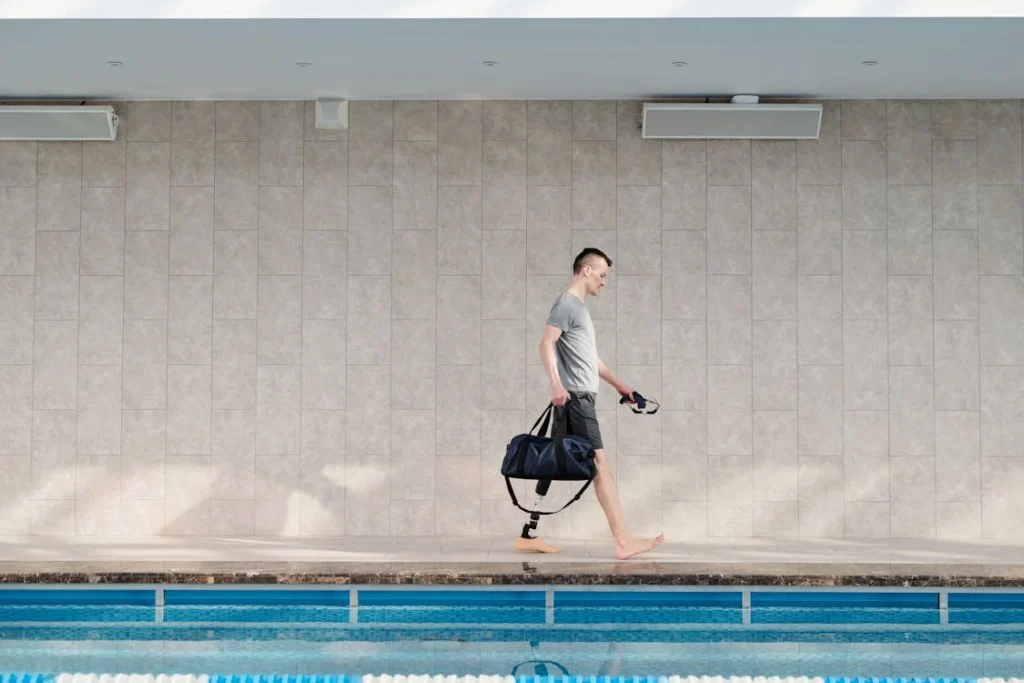
Multi-Axial Joints Across Age and Body Types: One Technology, Many Experiences
Children and Growing Bodies
Children who use prosthetics face a different challenge than adults: they’re constantly growing and changing.
Their bones lengthen, their posture evolves, and their activities shift every few months. A rigid prosthetic can’t keep up with all that change—it needs to bend, adapt, and move with the child, not against them.
Multi-axial joints are especially helpful for young users because they offer that needed flexibility. Whether it’s running in a schoolyard, hopping onto a bus, or climbing a playground structure, children are in motion constantly.
They twist, jump, and roll through their day. A multi-axial ankle or foot lets them do all this with more ease and less risk of falling or injury.
But just as important is how the prosthetic feels. Children often worry about standing out. A prosthetic that moves naturally helps them blend in, so they’re less self-conscious and more willing to engage in social and physical activities.
Elderly Users and the Need for Stability
On the other end of the age spectrum are elderly users. Their needs are shaped more by balance, joint pain, and energy conservation.
They may not need a prosthetic designed for high performance or speed—but they still need smooth, safe movement.
Multi-axial joints in this case serve as gentle stabilizers. They help adjust to uneven flooring in the home, soft garden paths, or a sloped temple entrance.
They also reduce the impact forces that travel up through the socket, which is key in older bodies where bones and joints are more fragile.
For elderly users, even a slight tilt in the ground can lead to a fall if the prosthetic foot is too rigid. A multi-axial joint gives just enough movement to prevent that stumble. It offers subtle control that improves both safety and confidence.
Body Weight and Motion Dynamics
Body weight also plays a role in how shock and movement are managed through a prosthetic. A heavier user generates more downward force with every step.
If the joint is not equipped to absorb and redirect that force, discomfort follows—and so does instability.
Multi-axial joints help distribute this force more evenly. They allow the prosthetic foot or knee to flex slightly under weight, which prevents sharp jolts.
This not only improves comfort but also extends the life of the device by reducing stress on the materials.
For users with a lighter body frame, the joint needs to offer responsiveness without feeling too loose.
The design has to find a perfect balance between motion and control, which is where the art of prosthetic fitting becomes so crucial.
Athletes and Highly Active Users
People who live active lifestyles—whether they’re athletes or just naturally energetic—push their prosthetics harder than most. They need a limb that responds instantly to changes in direction, speed, and terrain.
For these users, multi-axial joints aren’t just helpful—they’re essential. They allow fast pivoting, controlled landings, and strong toe-offs.
Running, playing sports, or hiking on trails all require joints that can handle dynamic, multi-directional force.
But there’s more to it than just performance. Active users often rely on rhythm. Their bodies get into a flow when they move. A rigid joint interrupts that flow, causing overcompensation from the rest of the body.
A multi-axial joint keeps everything smooth and continuous, making athletic movement feel natural and efficient.
One Technology, Many Lives
What makes multi-axial joints truly special is how they adapt to different lives. One person might need a joint that helps them bend down to feed their cattle.
Another might need one to walk confidently through a crowded city street. A child might need one that helps them run to catch the school van, while an elderly person needs one that steadies them on a rainy veranda.
These joints don’t just support movement. They support individuality. They allow prosthetic users to live on their own terms, with their own pace, rhythm, and routine.
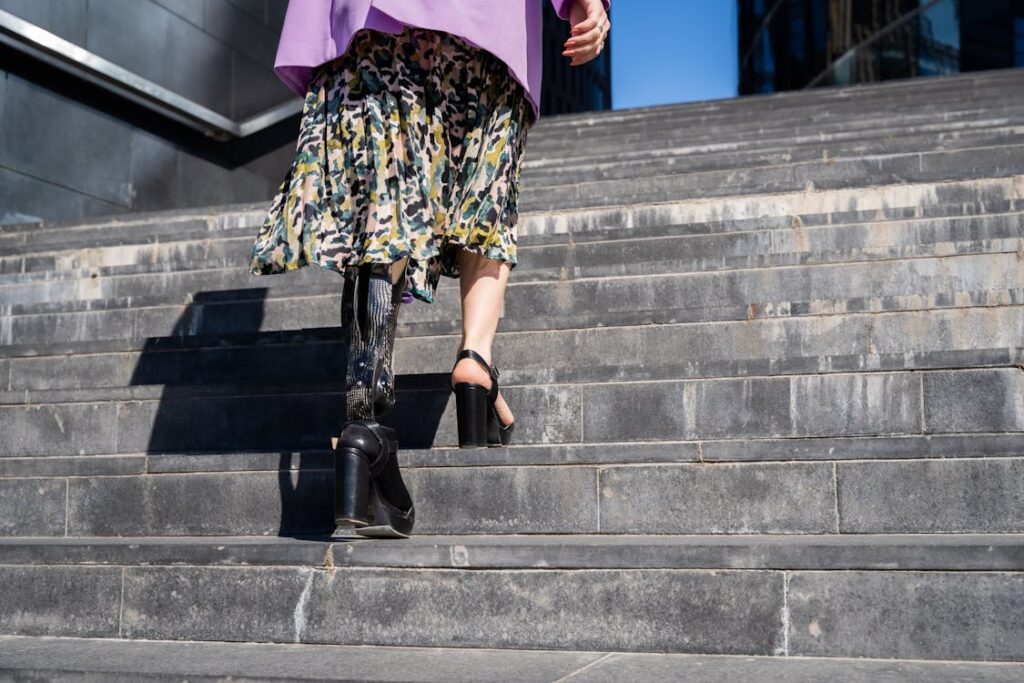
Adapting to the Environment: Why Multi-Axial Joints Matter More in Real-World Conditions
Walking in the Real World Isn’t Always Predictable
Much of prosthetic design is tested in clean, flat lab settings or on standard gym floors. But life rarely plays by those rules. In real-world environments—especially across towns, villages, and cities in India—the terrain changes fast.
Sidewalks are uneven. Roads may be cracked or sloped. Temples have steps, homes have narrow entrances, and rain can turn any surface into a slip hazard.
For people using prosthetics in these conditions, it’s not just about how well a foot moves forward and back. It’s about how well it reacts to the unexpected. That’s where multi-axial joints come in.
These joints allow for gentle tilts and shifts in multiple directions, which gives users the ability to adapt to surfaces on the fly.
They don’t need to overthink each step or look down constantly to avoid tripping. The foot adjusts slightly, absorbing movement and staying balanced.
In other words, these joints take away some of the guesswork—and that’s a big deal when your everyday path might include stepping over stones, navigating potholes, or standing for long stretches in a line.
The Monsoon Factor: Water, Slippery Surfaces, and Sudden Hazards
Anyone who’s lived through the monsoon season knows how suddenly surfaces can change. A dry sidewalk becomes slick. A dusty step turns muddy.
For someone using a rigid prosthetic, that’s a dangerous change. It increases the risk of slipping or losing control mid-step.
Multi-axial joints, especially at the ankle level, offer the micro-adjustments needed to manage these changes. A foot that can tilt slightly on contact with a slick surface is more likely to find balance. It won’t fight the surface—it’ll flow with it.
Even indoors, when floors become wet or uneven due to open windows or doorways, this kind of subtle adaptability helps maintain posture and prevent accidents.
Urban Crowds and Quick Turns
In dense cities like Mumbai, Delhi, or Bangalore, movement often involves weaving through crowds. You don’t just walk—you pivot, shift, and sometimes side-step quickly to avoid bumping into someone.
That kind of motion is hard to achieve with a stiff prosthetic.
Multi-axial joints respond to this quick motion by giving the foot or knee the ability to turn slightly, absorb the twist, and recover without knocking the user off balance.
This makes navigating public spaces smoother and less stressful, even during busy hours.
It also means fewer instances of joint strain. Without the need to twist the whole upper body to make a simple turn, users conserve energy and stay more relaxed throughout the day.
Rural Landscapes and Outdoor Living
In rural areas, the environment comes with its own set of challenges. There are farms, open fields, unpaved roads, and uneven flooring inside homes.
Daily activities might include walking through sand, over roots, or across loosely packed soil.
Multi-axial joints make these environments less intimidating. They allow the foot to adjust to small bumps and dips without forcing the user to compensate with their back or hip.
This creates smoother movement in places where high-tech roads and sidewalks don’t exist—and may never exist.
Even daily routines like washing clothes near a well, feeding animals, or standing for long hours in open spaces become easier when the limb adapts to the ground rather than resisting it.
Cultural Movements and Traditional Postures
In many Indian households, people sit cross-legged, squat, or kneel while eating, praying, or doing chores.
These movements aren’t just social—they’re part of the fabric of daily life. But for prosthetic users, they can be tough to manage without the right kind of joint flexibility.
A multi-axial knee, for example, may allow a deeper, smoother bend without locking or straining. An ankle that offers rotational freedom can help when rising from a squatting position.
These moments may seem small—but being able to fully participate in cultural practices has a big emotional impact.
It supports dignity, tradition, and connection to community—something every prosthetic design should aim for.
Conclusion
Multi-axial joints may be small, but they carry a big responsibility—bringing movement closer to what nature intended. They allow prosthetic limbs to bend, twist, and tilt just enough to make walking feel smooth, safe, and natural. Whether it’s navigating a crowded market, balancing on uneven ground, or simply standing still with confidence, these joints make the difference.
They don’t just support steps. They support independence, dignity, and a better quality of life. For children, the elderly, active adults, and everyone in between, multi-axial joints adapt to bodies, lives, and environments in real time.
At Robobionics, we believe movement should feel natural and intuitive, not something to struggle with. That’s why we continue to explore, improve, and personalize our prosthetics—so every user can move with ease and live with confidence.



